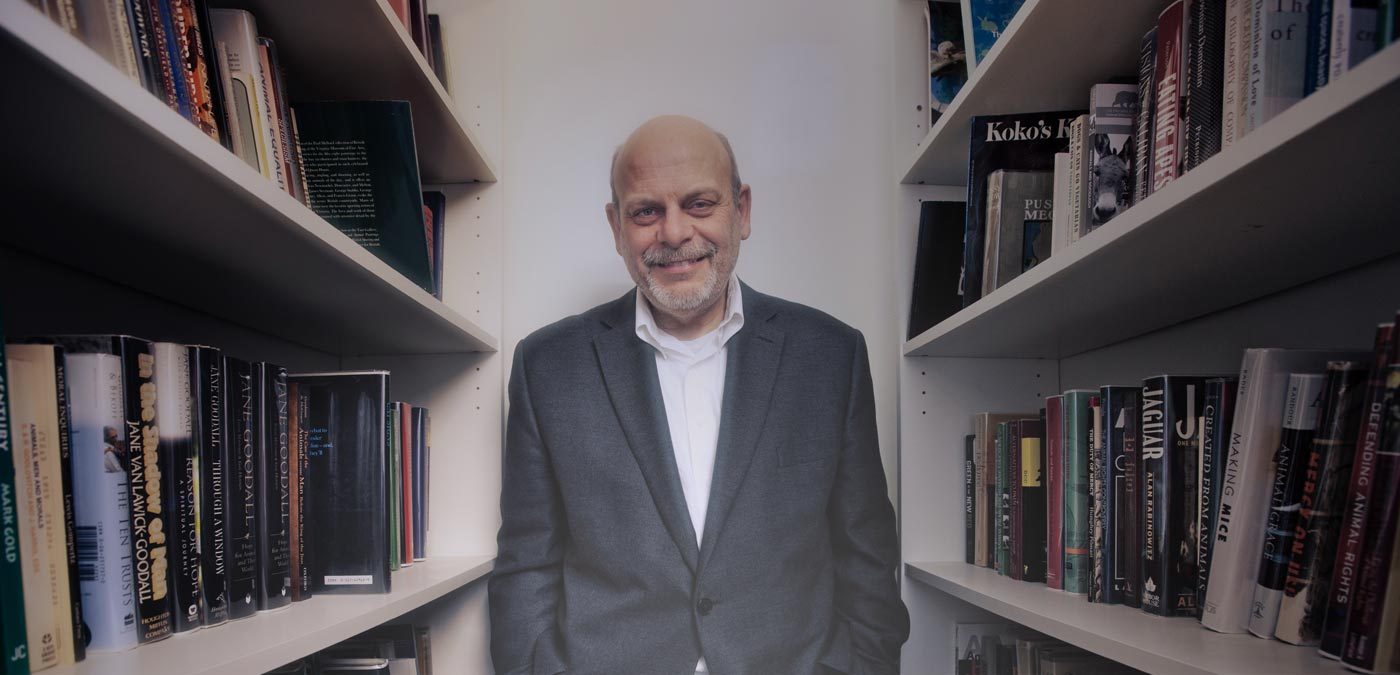BUAV, 30 Years Ago
It was 30 years ago this month that the “young turks” won control of the British Union for the Abolition of Vivisection.
I first joined BUAV as an employee in 1978 after two years working at Compassion In World Farming as their campaigns organiser. CIWF was a young, small but important organisation led by Peter Roberts, an ex-dairy farmer who was outraged at factory farming. BUAV, on the other hand, which was founded in 1898, although led by a sincere group of people, quietly campaigned against animal research. This was too much for a young upstart (“young turk”) like me. Consequently, I became increasingly involved with the animal rights movement taking off in the late 1970s. I helped found Coordinating Animal Welfare in 1978 with Fay Funnell and Angela Walder. Our mission was to “bring together the active members of all animal rights societies and work for unity in the movement.”
CAW provided activists with two forums where they could come together to share information and organise. They were an alternating bimonthly cycle of newsletters and public meetings, which were particularly successful as they regularly attracted more than 200 people. These meetings provided us with many opportunities to strengthen our understanding of animal rights and organise successful activities. This included the first public screening of “The Animals’ Film”; the closure of Club Row, a notorious London street market which sold dogs and cats to the public and reportedly to research laboratories; and hearing from such guest speakers as Clive Hollands, Richard Ryder and Peter Singer.
One of CAW’s campaigns was to democratically win control of the BUAV, which was governed by an executive committee elected by its members. From 1978 to 1980 a bitter fight developed between what became known as BUAV’s “old guard” and the emerging animal rights movement’s “young turks.” During this time BUAV fired me because they knew — while I was one of their employees — I was also co-leading CAW and part of the initiative to seize control of what they thought was their organisation. In December 1979 we won a court case which led us to holding the majority on the executive committee. In January 1980 I returned to BUAV’s employment as their campaigns organiser, a position I held until 1986 when I was acting general secretary. In 1987 I left the UK for the US to become the first executive director at People for the Ethical Treatment of Animals.
At the BUAV I played a leading role in revitalising a dormant organisation. My responsibilities included managing the organisation’s programs and activities, including several national demonstrations, public speaking, local group organising and editing a bimonthly membership newspaper. Directed programs which included organizing annual national meetings of local volunteers; speaking to local groups throughout the U.K.; organizing six national demonstrations ranging in size from 6,000 to 9,000 people; organized the country’s first locally elected government (London Borough of Islington) to authorize The Animals’ Charter. I directed the implementation of a corporate image program for the organisation’s public education materials so that they were all recognisable. BUAV was among the first — if not the first — to develop a corporate identity.
Also I was secretary to a coalition of four national anti-vivisection organisations (“Mobilisation for Laboratory Animals”) in a three-year major national campaign which led the opposition to the British government’s Animals (Scientific Procedures) Act 1986. This included a lobby of Parliament with 700 people which was accompanied by a public rally, which I chaired, with sympathetic MPs from all political parties, Lords and others. I also organised for the Mobilisation a demonstration in London’s Trafalgar Square with 9,000 people, 600 of whom participated in street theatre.
The Mobilisation argued that the new law would not even ban egregious examples of animal research. We had six minimum demands which we wanted to see included in the new law that was to replace the Cruelty to Animals Act 1876. They were a ban on experiments in the following areas: cosmetics, tobacco and alcohol; the Draize eye test (substances dripped into the eyes of rabbits); the LD50 test (poisoning test where one half of the animals die); warfare experiments; and all behavioural and psychological experiments. The sixth demand called for the government’s advisory committee on the implementation of the new act to exclude those who had a “vested interest” in the continuation of animal experimentation.
Fast forward 30 years and it is interesting to note what has and has not been accomplished as well as which issues persist in remaining unresolved among the Mobilisation’s demands. Of the proposed five prohibitions, warfare and behavioural and psychological research continue. Whereas there is some progress in the other areas. The British government banned the LD50 test. The Draize is effectively redundant having been replaced by skin irritancy tests on rabbits and non-animal alternatives. Cosmetic tests are illegal. No animals are used to test tobacco or tobacco products. The government’s advisory committee is not free from “vested interests” and while there is some progress it is not as independent and challenging as it could be. In 1980 there were some 4.75 million animal experiments, which is reduced to 3.2 million in 2007.
So, it is a mixed report.
There’s also, I think, a mixed report on the British anti-vivisection movement. On the one hand, BUAV focuses exclusively on direct negotiations with governments and regulatory agencies; however, some other national groups (e.g., National Anti-Vivisection Society and Animal Aid) either work at the same public policy level and also (or primarily) in public education. Depending upon who you talk to, the grassroots direct action groups have helped or hindered the anti-vivisection cause.
Finally, I find it interesting that, as I consider my thirtieth anniversary of working at the BUAV and notwithstanding the progress made, the issue of cosmetic testing persists unresolved. Notwithstanding The Independent reporting that the EU-wide ban from 2013 on the sale of cosmetics tested on animals will happen, according to the European Commission, the BUAV launches a petition to ensure the ban occurs, which was prompted by reports that this would not be the case.
I see a pattern developing here not only with cosmetic tests with animals but also with beak trimming for egg-laying chickens in battery cages in which commercial interests with plenty of time mandated to them by governments still come to the deadline with an unwillingness to comply. I cannot but help conclude that if it were not for the animal welfare or rights movement and individual animal activists there would still be, for example, drunken rats and calves in veal crates.
In 30 years time when I will be 85, I wonder if the animal industrial complex, including animal research laboratories and agribusiness interests, will still be resisting change forced upon them by enlightened public opinion. Or if their existence will be significantly reduced because the political economy of animal exploitation is such that it is unsustainable. And what animal advocates will learn to do is identify and target its weaknesses thereby helping to push it over. It is going to fall anyway because society cannot afford expensive ways to feed people and keep them healthy.











